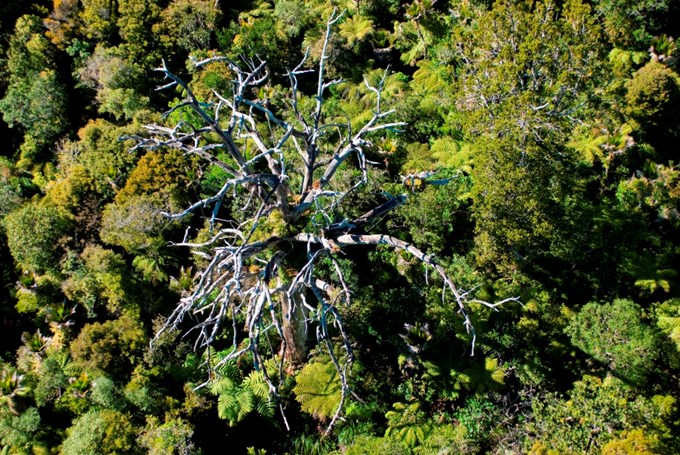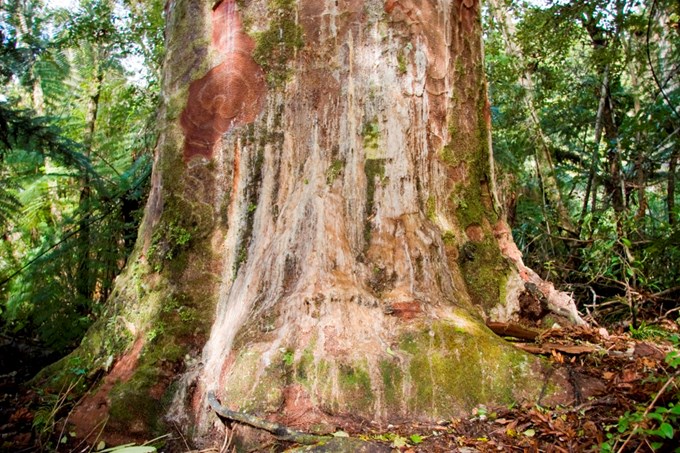We’re loving kauri trees to death in the Waitākere Ranges, so it’s time to make some changes to ensure their survival.
Kauri dieback research about to be released has confirmed that the ranges is the most heavily affected area of kauri forest in New Zealand, with infection rates having more than doubled in the last five years.

Environment and Community Chair Councillor Penny Hulse says these are alarming results and urgent action is required if we are to give Auckland’s iconic kauri forests a chance of survival.
“It is time for all Aucklanders and visitors to our kauri forests to take greater accountability for their role in preventing the spread of this disease that is threatening the future of our kauri taonga.
“The council is stepping up its efforts; I’m calling on everyone else to play their part too,” says Cr Hulse.
The council has a network of footwear cleaning stations at track entry points and intersections across the Waitākere Ranges and in other kauri-forested areas.

Cr Hulse says monitoring of these stations and other protection measures has produced disappointing results.
“We know that more than 70 per cent of Aucklanders are aware of kauri dieback disease, however we’re not seeing that translate into affirmative action on the ground.
“A disappointing 83 per cent of park visitors are walking past cleaning stations without scrubbing their shoes with trigene, going off-track or disregarding closed tracks.
“We are stepping up our efforts this summer with more rigorous management of cleaning stations and the introduction of kauri dieback ambassadors in high use parts of the ranges."
Te Kawerau a Maki Executive Chair Te Warena Taua says mana whenua have struggled with kauri dieback disease and the implications of its spread.
“The taha wairua, the spiritual wellbeing, of Te Wao nui o Tiriwa (the Waitākere Ranges) is of utmost importance to us and a threat to the heart of this forest is devastating."
“The kauri is not only a king among trees, but a support system for the rest of the forest – at least 17 other species need the towering strength of the kauri to survive. It is the backbone of our forest ecosystem,” he says.
As manager and guardian of the Waitākere Ranges Regional Park, the Auckland Council manages 279km of track. The recent survey has confirmed that 83km of track runs through infected areas.
Waitākere Ranges Local Board Chair Greg Presland says the community that lives and works in the ranges, and considers this forest their backyard, must (and do) play an important role as forest guardians.
“Much has been done to reroute tracks, improve drainage and construct boardwalks in high use areas. The Waitākere Ranges Local Board supports more investment in this work, so that we can enjoy and protect the forest."
Research
Auckland Council, supported by the national Kauri Dieback Programme has recently completed a five-yearly survey of kauri in the Waitākere Ranges Regional Park. The survey results are currently being peer reviewed and will be reported early next year. The following represents high level results from the survey:
- In the last five years kauri dieback infestation in the park has more than doubled from seven per cent to 19 per cent.
- The park is now the most heavily diseased area in New Zealand and over half the substantial kauri areas contain symptoms of infection.
- Infestation in the Waitākere Ranges Regional Park is greatest in those areas with highest foot traffic, including areas where intensive pest control is carried out.
- There is no cure for this disease although some treatment methods are looking promising. Until a cure is found attention is focused on restricting the spread.

The Auckland region and protection measures
Kauri dieback is present in some western local parks, isolated sites on the Awhitu peninsula, DOC reserves at Pakiri, Logue’s Bush (Tomarata), Albany and Okura Bush (Long Bay), and on many areas of private land.
Most of Auckland remains kauri dieback-free including the Hunua Ranges, south-eastern and northern Auckland and Gulf Islands (excluding Great Barrier Island).
Actions taken in the Waitākere Ranges to date include:
- track closures to create kauri protection zones over 10 per cent of the track network
- public education, signage and information (region-wide)
- track upgrades and additional maintenance (region-wide)
- strict hygiene protocols for all council staff and contractors working in the park (region-wide)
- more than 100 footwear cleaning stations for visitors to the park (and in other locations region-wide)
- community engagement and awareness programmes (localised) including appointment by the Waitākere Ranges Local Board of a kauri dieback community advisor.




